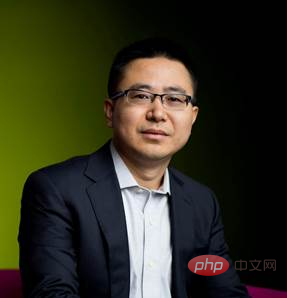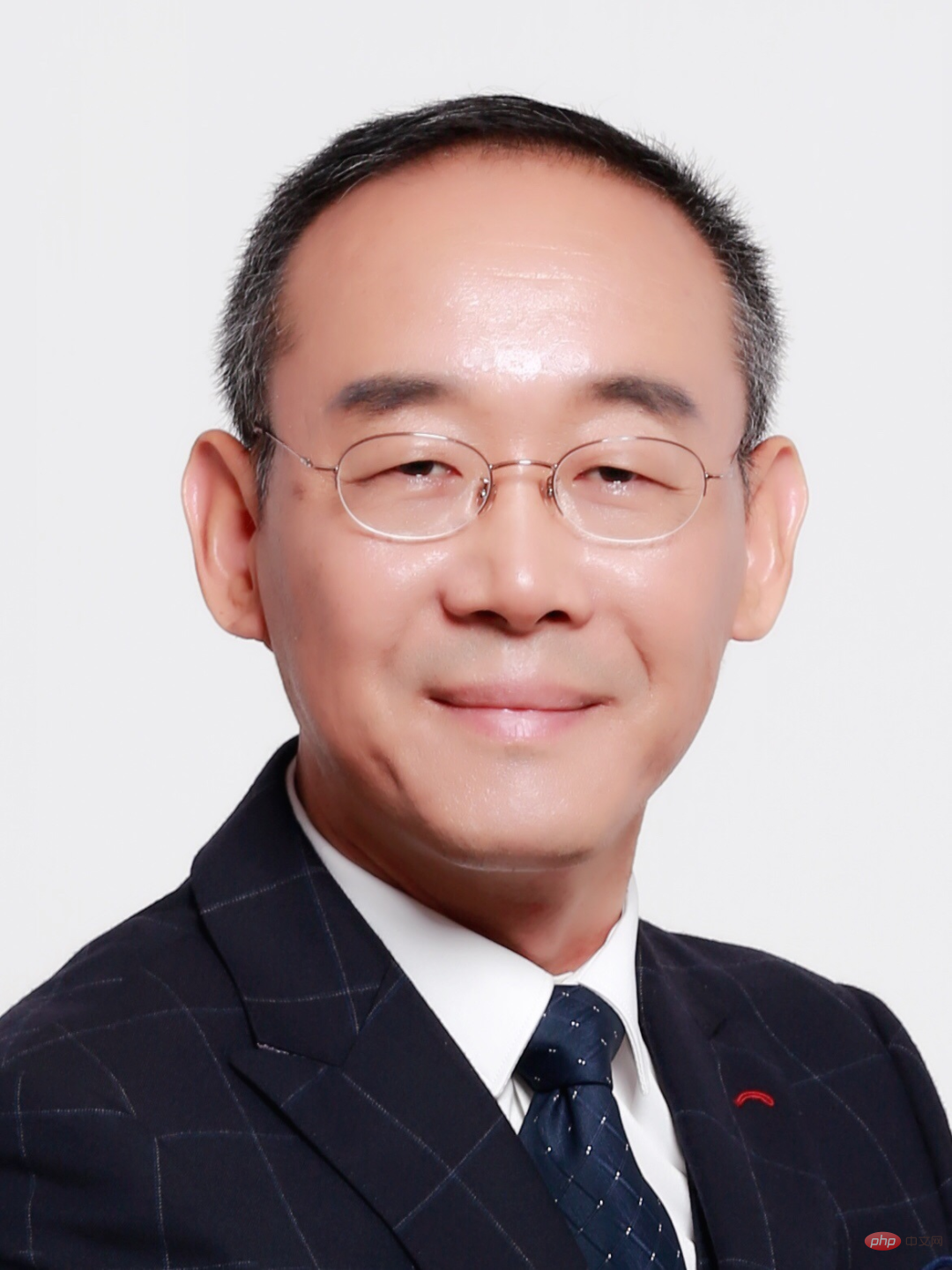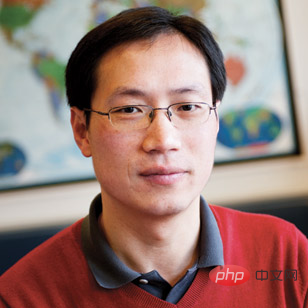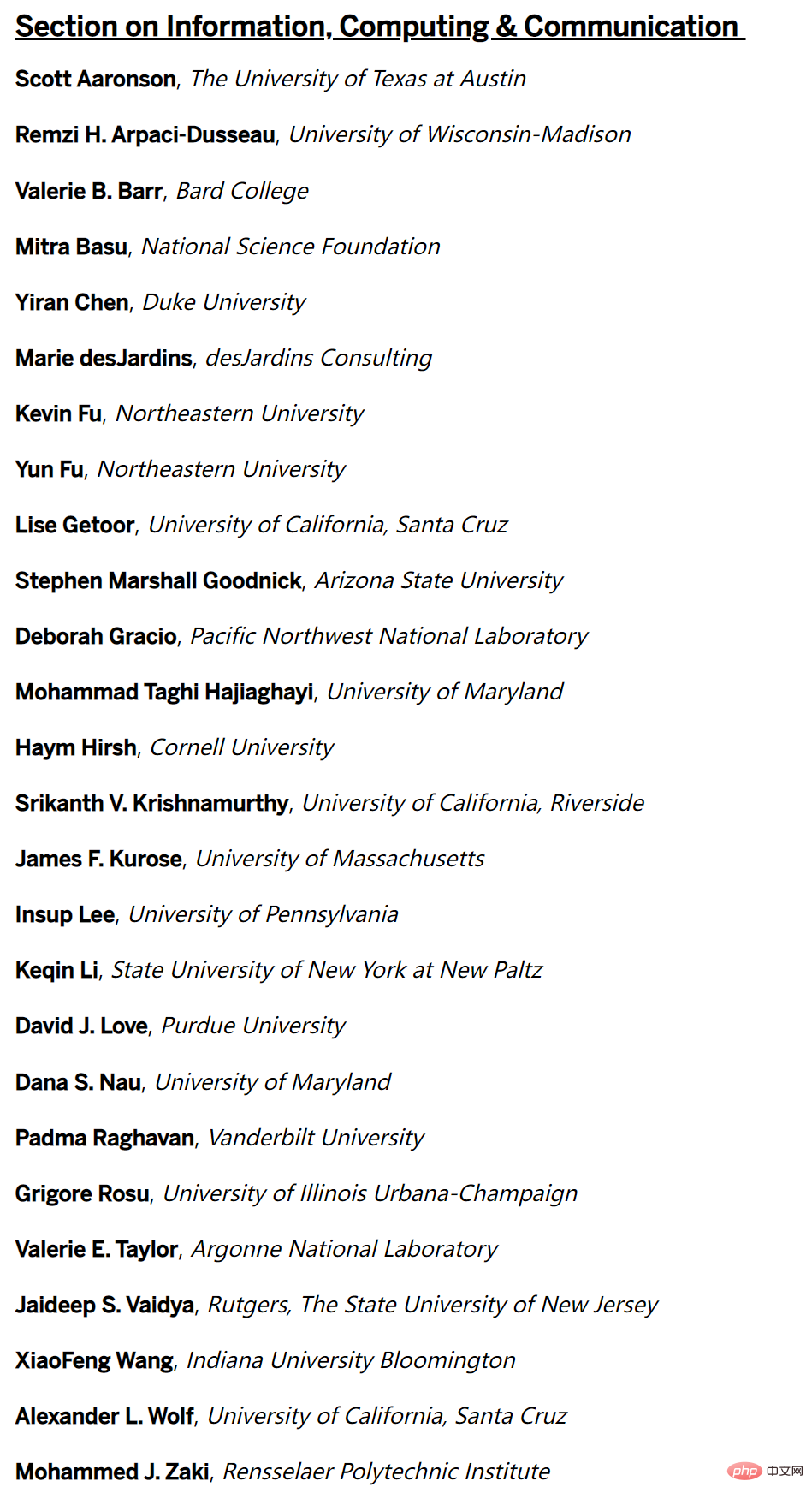 Technology peripherals
Technology peripherals
 AI
AI
 The list of 2022 AAAS Fellows has been released, and Duke University's Chen Yiran and quantum computing expert Scott Aaronson have been selected.
The list of 2022 AAAS Fellows has been released, and Duke University's Chen Yiran and quantum computing expert Scott Aaronson have been selected.
The list of 2022 AAAS Fellows has been released, and Duke University's Chen Yiran and quantum computing expert Scott Aaronson have been selected.
The 2022 AAAS Fellow list is out! The inductees include 505 scientists, engineers or innovators in various scientific disciplines in recognition of their important contributions to STEM disciplines, including groundbreaking research, leadership in specific fields, teaching and mentoring, promotion Collaborate and improve public understanding of science.
AAAS Fellows are elected annually by their peers who serve on the AAAS Board of Governors, the membership governing body of the organization with its earliest class dating back to 1874.
The AAAS Fellows are selected from subject areas including agriculture, food and renewable resources, anthropology, astronomy, atmospheric and hydrospheric sciences, biological sciences, chemistry, education, engineering, geology and Geography, history and philosophical sciences, industrial technology, information computing and communications, linguistics and language science, mathematics, medical science, neuroscience, pharmaceutical science, physics, psychology, socioeconomic and political science, statistics and other disciplines.
AAAS Fellows have made important contributions in their respective disciplines, including but not limited to:
- Hubble Spaceflight Telescopes applied to science missions;
- Modeling and analysis of epidemics and other global public health challenges;
- Advancing diversity in science gender, equity and inclusion;
- Develop research standards to improve ethical conduct in science, technology, engineering, mathematics and other fields;
- Makes groundbreaking contributions to the field of radiology and works to eliminate health disparities through expanded institutional partnerships;
- Protect marine ecosystems and their biodiversity.
Heart of Machine Here is an introduction to the Chinese information who were selected as AAAS 2022 Fellows in the discipline of information, computing and communication.
Yiran Chen, Duke University

Dr. Yiran Chen currently works in electrical and computer engineering at Duke University Department Professor, Director of the National Science Foundation (NSF) Next Generation Mobile Network and Edge Computing Artificial Intelligence Institute (Athena), National Science Foundation (NSF) New and Sustainable Computing (ASIC) University-Industry Collaborative Research Center (IUCRC) ), and co-director of the Center for Computational Evolutionary Intelligence (DCEI) at Duke University.
Dr. Chen Yiran received a bachelor’s degree and a master’s degree from Tsinghua University, and a doctorate from Purdue University in 2005. After five years in industry, he joined the University of Pittsburgh as an assistant professor in 2010 and was promoted to tenure-track associate professor, Bi-Century Alumni Chair in 2014, before joining the faculty at Duke University a few years later. His research team focuses on novel memory and storage systems, machine learning and neuromorphic computing, and mobile computing systems.
Dr. Chen Yiran has published one monograph, nearly 500 academic papers, and obtained 96 U.S. patents. He has served as an editor for dozens of international academic journals and served on the technical and organizational committees of more than 60 international academic conferences. He is currently the Editor-in-Chief of IEEE Circuits and Systems Magazine. He has won 9 best paper awards, one best poster award, and 15 best paper nominations in well-known international academic conferences and seminars such as MICRO, KDD, DATE, SEC, etc. Dr. Yiran Chen has also received numerous awards for her contributions to the academic community, such as the IEEE Computer Society Edward J. McCluskey Technical Achievement Award. He has been selected as a Distinguished Lecturer by IEEE CEDA and CAS. He is a Fellow of ACM, IEEE, and AAAS, and serves as Chairman of the ACM Design Automation Group (SIGDA).
Yun Fu, Northeastern University

Yun Fu is a Distinguished Professor in the School of Engineering and the Khoury School of Computer Science at Northeastern University. He has published more than 500 scientific publications, holds more than 35 patented inventions, and has won multiple best paper awards at top academic conferences. Yun Fu is also a member of the European Academy of Sciences, an IEEE Fellow, an AAIA Fellow, an ACM Distinguished Member, and a member of the ACM Future Computing Academy.
Hacken Li, State University of New York

Hacken Li is currently at the State University of New York Chair professor, he is also an academician of the European Academy of Sciences, an academician of the American Association for the Advancement of Science, an IEEE Fellow, and an AAIA Fellow. Professor Hacken Li has published hundreds of academic papers in academic journals and conferences, and has won many best paper awards.
Wang Xiaofeng, Indiana University Bloomington

Wang Xiaofeng is currently a computer science and engineering professor at Indiana University Professor James H. Rudy of the School, who is also the co-director of the Center for Security and Privacy in Informatics, Computing, and Engineering and the program director of the Master of Science in Secure Computing (MSSC), is also an IEEE Fellow.
His research focuses on system security and data privacy, with an emphasis on security and privacy issues in mobile and cloud computing, as well as privacy issues in human genome data dissemination and computation.
Professor Wang Xiaofeng is considered one of the most distinguished researchers in the field of system security research, known for his high-impact research on security analysis of real-world systems and biomedical data privacy. famous. His research projects on payments and single sign-on API integration, Android and iOS security, and IoT protection are changing the way the industry builds these systems. Additionally, he is a pioneering researcher in human genome privacy and co-founder of the iDASH Genome Privacy Competition.
Professor Wang Xiaofeng has also received many honors in scientific research, including the Privacy Enhancement Technology Outstanding Research Award (PET Award) and the Best Practical Paper Award at the 32nd IEEE Security and Privacy Symposium. (IEEE S&P Oakland) and two Outstanding Paper Awards at the 26th Network and Distributed Systems Security Symposium (NDSS).
In addition to the above Chinese, we also see quantum computing guru Scott Aaronson is also on the list.

Scott Aaronson is a professor of computer science at the University of Texas at Austin. His main research area is theoretical computer science. His research interests include the capabilities of quantum computers. and limitations, as well as computational complexity theory, etc. He is the recipient of the Tomassoni-Chisesi Prize in Physics (2018), the Simons Investigator Award (2017), and the National Science Foundation’s Alan T. Waterman Award (2012). In 2019, Scott Aaronson was elected ACM Fellow for "contributions to quantum computing and computational complexity."
The following is the complete list of subjects in the field of information, computing and communications:

2022 The complete list of AAAS Fellows of the year: https://www.aaas.org/page/2022-fellows-0?adobe_mc=MCMID=74911344417560070633847861783942742589|MCORGID=242B6472541199F70A4C98A6%40AdobeOrg|TS=1675 213810
The above is the detailed content of The list of 2022 AAAS Fellows has been released, and Duke University's Chen Yiran and quantum computing expert Scott Aaronson have been selected.. For more information, please follow other related articles on the PHP Chinese website!

Hot AI Tools

Undresser.AI Undress
AI-powered app for creating realistic nude photos

AI Clothes Remover
Online AI tool for removing clothes from photos.

Undress AI Tool
Undress images for free

Clothoff.io
AI clothes remover

AI Hentai Generator
Generate AI Hentai for free.

Hot Article

Hot Tools

Notepad++7.3.1
Easy-to-use and free code editor

SublimeText3 Chinese version
Chinese version, very easy to use

Zend Studio 13.0.1
Powerful PHP integrated development environment

Dreamweaver CS6
Visual web development tools

SublimeText3 Mac version
God-level code editing software (SublimeText3)

Hot Topics
 This article is enough for you to read about autonomous driving and trajectory prediction!
Feb 28, 2024 pm 07:20 PM
This article is enough for you to read about autonomous driving and trajectory prediction!
Feb 28, 2024 pm 07:20 PM
Trajectory prediction plays an important role in autonomous driving. Autonomous driving trajectory prediction refers to predicting the future driving trajectory of the vehicle by analyzing various data during the vehicle's driving process. As the core module of autonomous driving, the quality of trajectory prediction is crucial to downstream planning control. The trajectory prediction task has a rich technology stack and requires familiarity with autonomous driving dynamic/static perception, high-precision maps, lane lines, neural network architecture (CNN&GNN&Transformer) skills, etc. It is very difficult to get started! Many fans hope to get started with trajectory prediction as soon as possible and avoid pitfalls. Today I will take stock of some common problems and introductory learning methods for trajectory prediction! Introductory related knowledge 1. Are the preview papers in order? A: Look at the survey first, p
 The Stable Diffusion 3 paper is finally released, and the architectural details are revealed. Will it help to reproduce Sora?
Mar 06, 2024 pm 05:34 PM
The Stable Diffusion 3 paper is finally released, and the architectural details are revealed. Will it help to reproduce Sora?
Mar 06, 2024 pm 05:34 PM
StableDiffusion3’s paper is finally here! This model was released two weeks ago and uses the same DiT (DiffusionTransformer) architecture as Sora. It caused quite a stir once it was released. Compared with the previous version, the quality of the images generated by StableDiffusion3 has been significantly improved. It now supports multi-theme prompts, and the text writing effect has also been improved, and garbled characters no longer appear. StabilityAI pointed out that StableDiffusion3 is a series of models with parameter sizes ranging from 800M to 8B. This parameter range means that the model can be run directly on many portable devices, significantly reducing the use of AI
 Have you really mastered coordinate system conversion? Multi-sensor issues that are inseparable from autonomous driving
Oct 12, 2023 am 11:21 AM
Have you really mastered coordinate system conversion? Multi-sensor issues that are inseparable from autonomous driving
Oct 12, 2023 am 11:21 AM
The first pilot and key article mainly introduces several commonly used coordinate systems in autonomous driving technology, and how to complete the correlation and conversion between them, and finally build a unified environment model. The focus here is to understand the conversion from vehicle to camera rigid body (external parameters), camera to image conversion (internal parameters), and image to pixel unit conversion. The conversion from 3D to 2D will have corresponding distortion, translation, etc. Key points: The vehicle coordinate system and the camera body coordinate system need to be rewritten: the plane coordinate system and the pixel coordinate system. Difficulty: image distortion must be considered. Both de-distortion and distortion addition are compensated on the image plane. 2. Introduction There are four vision systems in total. Coordinate system: pixel plane coordinate system (u, v), image coordinate system (x, y), camera coordinate system () and world coordinate system (). There is a relationship between each coordinate system,
 DualBEV: significantly surpassing BEVFormer and BEVDet4D, open the book!
Mar 21, 2024 pm 05:21 PM
DualBEV: significantly surpassing BEVFormer and BEVDet4D, open the book!
Mar 21, 2024 pm 05:21 PM
This paper explores the problem of accurately detecting objects from different viewing angles (such as perspective and bird's-eye view) in autonomous driving, especially how to effectively transform features from perspective (PV) to bird's-eye view (BEV) space. Transformation is implemented via the Visual Transformation (VT) module. Existing methods are broadly divided into two strategies: 2D to 3D and 3D to 2D conversion. 2D-to-3D methods improve dense 2D features by predicting depth probabilities, but the inherent uncertainty of depth predictions, especially in distant regions, may introduce inaccuracies. While 3D to 2D methods usually use 3D queries to sample 2D features and learn the attention weights of the correspondence between 3D and 2D features through a Transformer, which increases the computational and deployment time.
 The first multi-view autonomous driving scene video generation world model | DrivingDiffusion: New ideas for BEV data and simulation
Oct 23, 2023 am 11:13 AM
The first multi-view autonomous driving scene video generation world model | DrivingDiffusion: New ideas for BEV data and simulation
Oct 23, 2023 am 11:13 AM
Some of the author’s personal thoughts In the field of autonomous driving, with the development of BEV-based sub-tasks/end-to-end solutions, high-quality multi-view training data and corresponding simulation scene construction have become increasingly important. In response to the pain points of current tasks, "high quality" can be decoupled into three aspects: long-tail scenarios in different dimensions: such as close-range vehicles in obstacle data and precise heading angles during car cutting, as well as lane line data. Scenes such as curves with different curvatures or ramps/mergings/mergings that are difficult to capture. These often rely on large amounts of data collection and complex data mining strategies, which are costly. 3D true value - highly consistent image: Current BEV data acquisition is often affected by errors in sensor installation/calibration, high-precision maps and the reconstruction algorithm itself. this led me to
 GSLAM | A general SLAM architecture and benchmark
Oct 20, 2023 am 11:37 AM
GSLAM | A general SLAM architecture and benchmark
Oct 20, 2023 am 11:37 AM
Suddenly discovered a 19-year-old paper GSLAM: A General SLAM Framework and Benchmark open source code: https://github.com/zdzhaoyong/GSLAM Go directly to the full text and feel the quality of this work ~ 1 Abstract SLAM technology has achieved many successes recently and attracted many attracted the attention of high-tech companies. However, how to effectively perform benchmarks on speed, robustness, and portability with interfaces to existing or emerging algorithms remains a problem. In this paper, a new SLAM platform called GSLAM is proposed, which not only provides evaluation capabilities but also provides researchers with a useful way to quickly develop their own SLAM systems.
 Which computer should Geographic Information Science majors choose?
Jan 13, 2024 am 08:00 AM
Which computer should Geographic Information Science majors choose?
Jan 13, 2024 am 08:00 AM
Recommended computers suitable for students majoring in geographic information science 1. Recommendation 2. Students majoring in geographic information science need to process large amounts of geographic data and conduct complex geographic information analysis, so they need a computer with strong performance. A computer with high configuration can provide faster processing speed and larger storage space, and can better meet professional needs. 3. It is recommended to choose a computer equipped with a high-performance processor and large-capacity memory, which can improve the efficiency of data processing and analysis. In addition, choosing a computer with larger storage space and a high-resolution display can better display geographic data and results. In addition, considering that students majoring in geographic information science may need to develop and program geographic information system (GIS) software, choose a computer with better graphics processing support.
 'Minecraft' turns into an AI town, and NPC residents role-play like real people
Jan 02, 2024 pm 06:25 PM
'Minecraft' turns into an AI town, and NPC residents role-play like real people
Jan 02, 2024 pm 06:25 PM
Please note that this square man is frowning, thinking about the identities of the "uninvited guests" in front of him. It turned out that she was in a dangerous situation, and once she realized this, she quickly began a mental search to find a strategy to solve the problem. Ultimately, she decided to flee the scene and then seek help as quickly as possible and take immediate action. At the same time, the person on the opposite side was thinking the same thing as her... There was such a scene in "Minecraft" where all the characters were controlled by artificial intelligence. Each of them has a unique identity setting. For example, the girl mentioned before is a 17-year-old but smart and brave courier. They have the ability to remember and think, and live like humans in this small town set in Minecraft. What drives them is a brand new,





